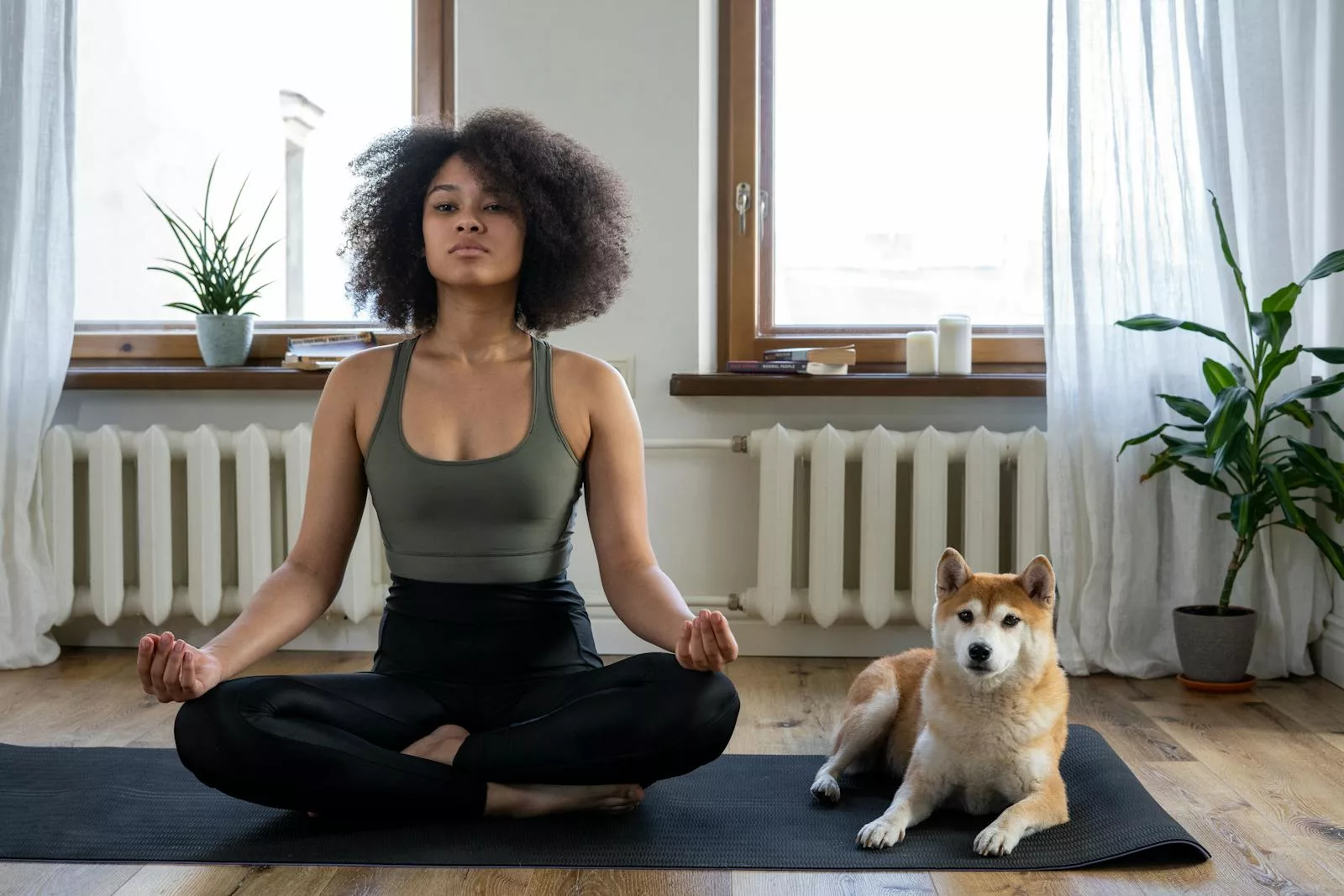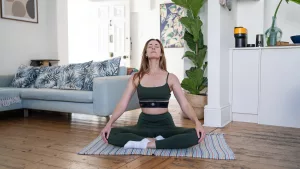Meditation is a powerful practice that promotes mental clarity, emotional balance, and overall well-being. For many, the comfort of home offers the perfect environment to cultivate this transformative habit. Whether you’re a beginner or an experienced practitioner, meditating at home can become a deeply rewarding routine. This guide will explore the best ways to meditate at home, offering practical techniques, step-by-step instructions, and tips for creating a conducive environment. With consistent practice and a well-prepared space, meditation can become an enriching part of your daily life, unlocking mental peace and personal growth.
Why Meditate at Home?
Meditating at home offers a range of unique advantages. It provides unparalleled convenience, as you can practice anytime without worrying about traveling to a studio. Familiar surroundings enhance comfort, allowing you to relax fully and establish a sense of safety. Additionally, you have complete control over your environment, enabling you to personalize it to your liking with calming scents, soft lighting, and comfortable seating. Home meditation also saves money, eliminating the need for costly memberships or classes. Finally, the flexibility of meditating at home allows you to explore techniques and durations that suit your lifestyle without external pressure.
Practicing meditation at home can also foster a deeper connection to your personal space. Over time, your meditation area may become a sanctuary of calm that reflects and amplifies your inner peace. However, challenges such as distractions or lack of discipline may arise. To address these, create a dedicated space where you can meditate without interruptions. Communicate with household members about your practice and use tools like noise-canceling headphones to reduce disturbances. Build discipline by treating meditation as an essential part of your daily routine, similar to eating or exercising. Remind yourself that even brief moments of mindfulness can yield powerful results.
Preparing Your Space for Meditation
A well-prepared meditation space enhances the overall experience and deepens your practice. Select a quiet area in your home, ideally with natural light, as it fosters relaxation and improves mood. Comfort is key—invest in a good-quality cushion, chair, or mat that supports your posture. Good posture ensures your comfort during longer sessions and helps maintain focus. Minimalism plays an important role here; a clutter-free space mirrors a clear and focused mind. Adding personal touches such as indoor plants or meaningful objects can further enhance the atmosphere. Include soothing elements like essential oils, candles, or a playlist of gentle music to set the mood. Ensure the temperature is comfortable, and have items like blankets or an eye mask on hand to adjust to your needs during the session.
Lighting also contributes to the ambiance. Use dimmable lights or string lights to create a cozy atmosphere. If natural light isn’t available, opt for warm, soft lighting to promote relaxation. Personalize the space with items like a small table for affirmations, gratitude notes, or even crystals to elevate your experience. Ensure that your chosen location is free of distractions, and consider adding a partition if you share your space with others.
Best Meditation Techniques for Home Practice
Meditating at home allows you to experiment with various techniques to discover what works best for you.
1. Mindfulness Meditation
Mindfulness meditation is all about staying present. You can practice it by sitting comfortably, closing your eyes, and paying close attention to your breathing. Should your mind wander, gently bring your focus back to your breath. You can also focus on the sensations of your body, the sounds around you, or even the rhythm of your heartbeat. This technique enhances emotional awareness and helps alleviate stress by anchoring you to the current moment.
Mindfulness meditation encourages self-compassion and acceptance. Over time, it fosters clarity and a heightened ability to manage emotions, making it a cornerstone practice for those seeking mental equilibrium.
2. Body Scan Meditation
Body scan meditation is ideal for releasing tension and promoting relaxation. To practice, lie down or sit in a relaxed position and focus your attention on each part of your body, starting from your head and moving downward. As you identify areas of tension, consciously release them while taking deep breaths. This method fosters a strong mind-body connection and can be particularly beneficial before bedtime.
In addition to relieving tension, body scans can increase bodily awareness. By tuning into physical sensations, you cultivate a deeper appreciation of your body and its needs. This practice can help identify areas that require more care, such as tight shoulders or shallow breathing, allowing you to address these issues proactively.
3. Guided Meditation
Guided meditation involves listening to a recorded or live instructor who provides cues and imagery to guide your session. This is a helpful approach for beginners or those who find it challenging to meditate independently. With guided meditation, you’ll have the added structure of a narrated session that directs your thoughts and breathing.
Guided sessions can vary in length and theme, such as stress relief, gratitude, or cultivating positivity. Some instructors include visualization exercises, mantras, or affirmations, adding richness and variety to your practice. Many meditation apps offer guided meditations tailored to specific goals, making them a valuable resource for home practitioners.
4. Loving-Kindness Meditation
Loving-kindness meditation is designed to nurture feelings of compassion and goodwill. You begin by focusing positive thoughts on yourself, such as “May I be happy and at peace,” and gradually extend these thoughts to loved ones, acquaintances, and eventually all beings. This technique fosters empathy, reduces negative emotions, and strengthens your social bonds.
Over time, loving-kindness meditation can transform how you relate to others. By practicing this technique consistently, you may notice a reduction in anger, resentment, or frustration, replaced by a greater sense of connection and understanding.
5. Mantra Meditation
Using a mantra, such as “Om” or “I am calm,” can help focus your mind. Sit in a comfortable position, close your eyes, and repeat the chosen word or phrase, either silently or aloud. Synchronizing the mantra with your breathing can deepen the practice, fostering concentration and inner peace.
Mantra meditation is particularly effective for quieting a restless mind. The repetitive nature of the mantra anchors your attention, creating a sense of rhythm and stability. Over time, it can lead to a profound sense of inner harmony and spiritual connection.
6. Visualization Meditation
This involves mentally creating a serene environment, such as a beach or forest, to promote relaxation. Engage all your senses to make the visualization vivid and immersive. Imagine the warmth of the sun, the sound of waves, or the scent of pine trees. This practice is especially effective for reducing stress and enhancing creativity.
Visualization meditations can also be goal-oriented. For example, you might visualize yourself achieving a specific aspiration, reinforcing positive thinking and motivation. Whether for relaxation or focus, visualization enhances your ability to direct your mental energy.
7. Breathwork
Breathwork focuses on controlled breathing techniques. One example is the 4-7-8 method, where you inhale for four seconds, hold for seven, and exhale for eight. Such techniques improve oxygen flow, lower anxiety, and boost mental clarity.
In addition to calming the nervous system, breathwork can energize and revitalize. Practices like alternate nostril breathing or diaphragmatic breathing add variety and can be tailored to your needs, whether relaxation or invigoration.
Tips for Building a Consistent Meditation Practice
Consistency is the key to reaping the benefits of meditation. Establishing a routine by meditating at the same time daily can help form a lasting habit. Start with manageable sessions of five to ten minutes and increase the duration as you grow more comfortable. Use tools like journals or meditation apps to track your progress and reflect on your journey. Celebrate milestones, such as completing a week or month of daily meditation, to stay motivated. If distractions arise, remind yourself that imperfection is natural; simply return your focus to your practice without frustration.
In addition, consider pairing meditation with daily activities like waking up or winding down at night. By linking meditation to existing habits, you make it easier to integrate into your routine. Remember, the key is to show up consistently, even on days when it feels challenging.
Enhancing Your Meditation Experience
To deepen your practice, consider integrating movement-based techniques like yoga or tai chi, which combine mindfulness with physical activity. Technology can also play a role; apps like Headspace or Calm offer guided sessions tailored to various needs, while wearables provide feedback to refine your techniques. As you advance, you might explore more specialized forms of meditation, such as Zen or Vipassana, to expand your practice further.
Exploring different styles keeps your practice fresh and engaging. Attending virtual workshops or joining online communities can also provide valuable insights and inspiration. Remember, the journey of meditation is as much about experimentation as it is about discipline.
Conclusion
Meditating at home is an accessible and versatile way to improve mental, emotional, and physical health. By preparing a dedicated space, exploring various techniques, and committing to a consistent routine, you can create a practice that enriches every aspect of your life. Whether your goal is relaxation, clarity, or personal growth, meditation at home offers a path to greater balance and fulfillment. With time and dedication, it can become a cornerstone of your well-being, guiding you toward a more peaceful and present way of living. As you deepen your practice, you may find that meditation becomes not just a daily ritual, but a transformative lens through which you view and experience life.




